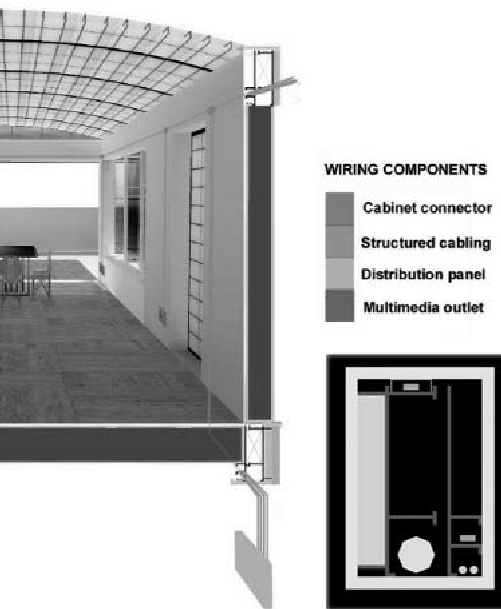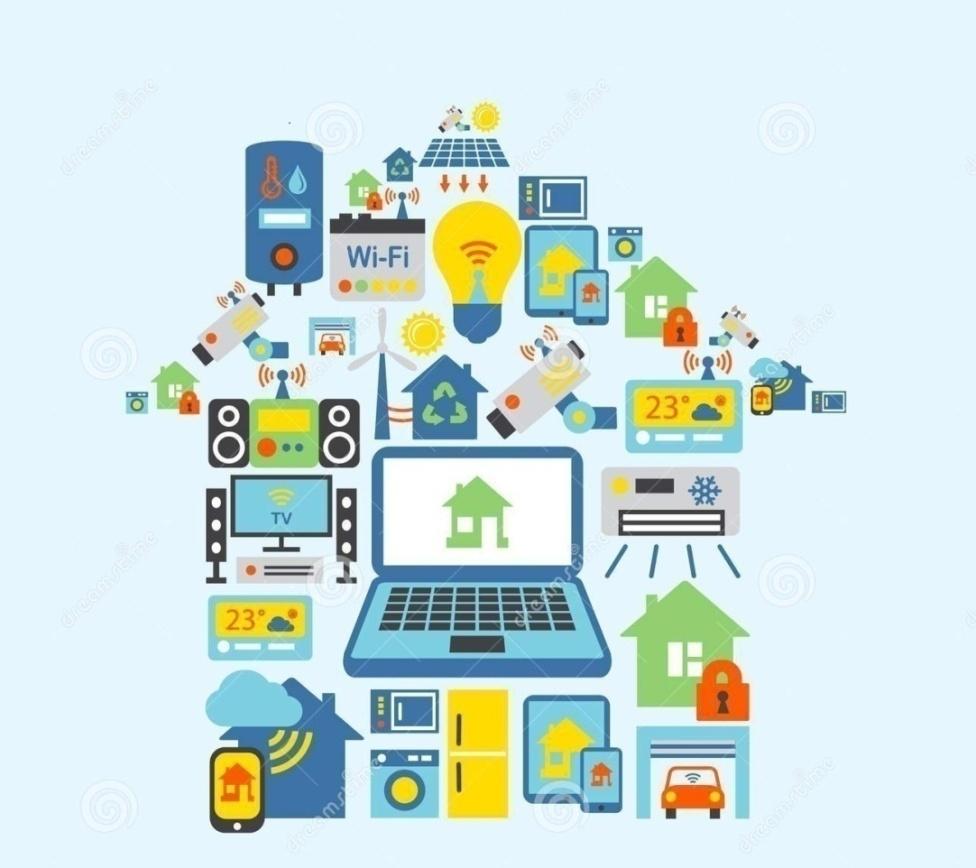
- •Intelligent houses
- •Preindustrial interiors: structure and space
- •Fig. 1. The Skeleton of a Simple Building
- •Machine-age interiors: dominance of mechanical and electrical systems
- •Fig. 2. Mechanical and Electrical Networks
- •Fig. 3. A two-storey house
- •Text c
- •1. A wall
- •Fig. 4. Smart Pot
- •Video Monitor
- •Smart Air Conditioner
- •Intelligent houses
- •Fig. 5. Buildings of the 21st century are acquiring electronic nervous systems
- •Fig. 6. Intelligent Systems
- •Unit 5 building materials
- •In our everyday lives, but define the environment in which we live.
- •Materias for construction
- •Text d bricks
- •Steel and other metals
- •Text g glass
- •In your group discuss what materials you would choose and why. Then present it to others, explaining your decision.
Electronic
sensors correspond to the eyes, ears, and other sensory organs of
living organisms. Computer-connected microphones and digital cameras
are the most obvious. Pressure sensors can be placed in flooring and
furniture to track locations of furniture and people. Motion sensors
tell if there is activity within a space. Electronic and optical
badges allow objects to be identified. Climatic sensors can keep
track of temperature, humidity and air movement. Specialized chemical
sensors exist in great variety. And medical sensors can monitor your
bodily condition.
Fig. 5. Buildings of the 21st century are acquiring electronic nervous systems
Robotic effectors are machines that have been brought under computer control. They correspond to the hands, feet, and other parts of the body that living organisms use in everyday life. Computer-controlled displays, printers, and audio devices have become very popular.
Lighting, heating and ventilating, water and sewage, cleaning, and safety systems of buildings may also be connected with computers. So may elements that operate doors, windows, and blinds or other sun-control devices.
Advanced control software may respond to present conditions. So an air-conditioning system may respond to temperature variations, a houseplant irrigation system may respond to soil moisture, a clothes washer may respond to the particular fabric and cleaning problem and so on. Advanced control software may also coordinate the actions of several devices and systems. On a snowy winter morning it might turn up the heat at the usual time, make wake-up calls at appropriate moments, switch on the lights, set appliances to work to prepare breakfast and start the car.
More surprisingly intelligent interiors have the potential to deliver medical services in new ways. Once, before medical treatment depended on highly specialized resources, doctors made house calls. Intelligent interiors now open up the possibility of continuous remote medical monitoring and of controlled delivery of medication.
These new capabilities fundamentally change the way in which buildings respond to the requirements of their inhabitants. Preindustrial buildings relied mostly on passive strategies for responding to environmental variation and meeting user needs. Buildings of the industrial era made much more use of electrical and mechanical devices to perform these tasks, but depended on manual and simple automatic control systems. The intelligent interiors of the 21st century combine both.
Exercise 23. Choose the best answer.
1. Electronic sensors correspond to ... .
A. Furniture location.
B. Hands and feet.
C. Sensory organs of human beings.
2.Pressure sensors can be placed in ... to track locations of furniture and people.
A. Ceilings.
B. Walls.
C. Flooring.
3. ... can keep track of temperature and humidity.
A. Climatic sensors.
B. Digital cameras.
C. Optical badges.
4. Robotic effectors correspond to ... .
A. Eyes and ears.
B. Air movement.
C. Hands and feet.
5. Advanced control software may ... .
A. Iron clothes.
B. Set appliances to work to make breakfast.
C. Call the doctor.
Exercise 24. Complete the table.
|
DEVICES |
EXAMPLES |
FUNCTION |
|
Electronic sensors |
Digital cameras |
Video monitoring. |
|
Pressure sensors |
(1) ... | |
|
(2) ... |
Telling if there is activity within a space. | |
|
Optical badges |
(3) ... | |
|
(4) ... |
Monitoring your bodily condition. | |
|
Robotic effectors |
(5) ... |
Switching on the lights. |
|
Sun-control devices |
(6) ... | |
|
Advanced control software |
(7) ... |
Responding to temperature variations. |
|
An irrigation system |
(8) ... |
Exercise 25. Match each description to the term it describes.
Preindustrial buildings.
Buildings of the industrial era.
Intelligent houses.
1. Electrical and mechanical devices were used, but they depended on manual and simple automatic control systems. ______________________
2. Buildings of this type relied on passive strategies for responding to environmental changes and meeting user needs. ______________________
3. Electronic sensors and robotic effectors are integrated into the network so that the building can respond more effectively to changing interior requirements and external conditions. _____________________
Exercise 26. Look at the picture below. It presents different Smart Home systems. Name as many as possible. Which three do you think are the most useful? How do they work?

